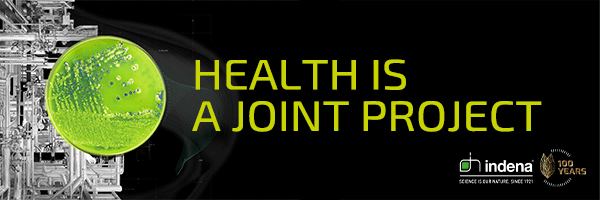Pharmaceuticals
Continuous flow: Where chemistry meets engineering 27th July 2018
By Shawn Conway, Director of Engineering – R&D at Cambrex High Point
Shawn Conway, Director of Engineering – R&D at Cambrex High Point, discusses the growing movement toward

Shawn Conway, Director of Engineering – R&D at Cambrex High Point, discusses the growing movement towards continuous flow operations in pharmaceutical manufacturing.
In the pharmaceutical manufacturing sector, batch production has been the traditional workhorse of the industry, whereas, historically, continuous flow chemistry was reserved primarily for high energy, hazardous reactions. However, driven by the availability of new technologies and equipment, there has been a growing movement towards continuous flow operations.
Continuous flow chemistry has traditionally been used by the API manufacturing sector only when batch operations were considered too dangerous: it was, and remains, a safe way of dealing with high energy products and reagents. These reactions have traditionally been carried out in batch processes in bunkered production facilities, located well away from main manufacturing areas with vessel sizes and inventories being kept deliberately low so that in the case of an uncontrolled event, any damage could be easily contained and the risk to personnel and the surrounding area would be limited.
However, these restrictions meant that the cost of establishing and maintaining these facilities, together with the small scale of the reactions, was prohibitive.
Developing new continuous flow processes has been challenging because of the nature and inflexibility of commercially available equipment, meaning significant investment in bespoke facilities has been necessary for custom development and manufacturing organizations (CDMOs) looking to move into this field. For larger pharmaceutical companies, the impetus to develop drugs faster, more cost-effectively, and for smaller patient populations, has fuelled the drive towards replacing batch production with continuous flow, and a large number have invested in continuous flow operations for API production as well as formulation or both.
Notably, GSK has invested in continuous flow API development capabilities in its facilities in the UK, US and Singapore, while Vertex and Johnson & Johnson have both invested in continuous flow formulation technology, and Novartis, in collaboration with Massachusetts Institute of Technology (MIT), is looking at a combination of continuous flow synthesis and continuous flow formulation.
There are five main areas where continuous flow chemistry offers clear benefits over the more traditional batch operation, these being cost savings, quality improvements, scale-up and scale-out, safety, and the ability to handle new technologies and reagents.
In terms of cost, the comparative investment for a new batch facility can be up to four times more than the expenditure on a comparable continuous flow facility. Additionally, continuous flow requires less labour and may lead to fewer analytical procedures, representing a reduction of up to 20% in operating expenditure.
For a continuous process that is well understood and tightly defined, control and quality can be maintained with simplified measurements. In such cases, the process analytical technology (PAT) required is generally easier than that of batch production – often with only temperature probes and flow meters being required to ensure that the process remains within the acceptable parameters (i.e., defined process window) to afford product of a known quality. If desired or necessary, sophisticated PAT probes can be easily integrated into a flow process to allow for rapid detection of deviations, in addition to nearly continuous monitoring of instantaneous quality, as opposed to waiting on a single batch sample and corresponding measurement.
Energy consumption can be cut by up to 30%, while solvent usage will also be reduced significantly, or in some cases, eliminated entirely; less waste solvent will also be produced which reduces costs associated with its disposal. Furthermore, the footprint of a new continuous flow facility can be less than half that required by a traditional batch operation.
Scaling-up (or scaling-out) is easier and more cost-effective with continuous flow, as rather than having to transfer the process from a small reactor to a larger one and the validation requirement this entails, scaling up a continuous flow process can be achieved by the addition of another reactor of the same size to run in parallel.
It is still the case today that continuous flow operation is the best and safest way of handling energetic and hazardous reactions. However, by enabling these operations to take place in a standard manufacturing plant they can be linked more directly to the other downstream processes giving the advantage of integration of operations. Finally, certain technologies such as photochemistry and electrochemistry, do not lend themselves to batch operations but are easily facilitated in continuous flow.
Laboratory chemists typically start off with small glass flasks and the flasks get larger and larger in volume as development progresses. Chemical engineers, on the other hand, have spent a lot of time studying continuous flow processes, and the important step for companies is to form dedicated continuous flow teams consisting of chemists, chemical engineers and analytical chemists to integrate skills, experiences and expertise to maximize the chances of a project’s success. As with every new technology and application, the more case studies that are published, the greater the likelihood the industry will see the potential benefits and continue to look positively at the promise of continuous flow chemistry.
Author:
Shawn Conway, Director of Engineering – R&D, Cambrex High Point, 4180 Mendenhall Oaks Pkwy, High Point, NC 27265, USA.
www.cambrex.com
Shawn Conway, Director of Engineering – R&D, Cambrex High Point, 4180 Mendenhall Oaks Pkwy, High Point, NC 27265, USA.
www.cambrex.com


